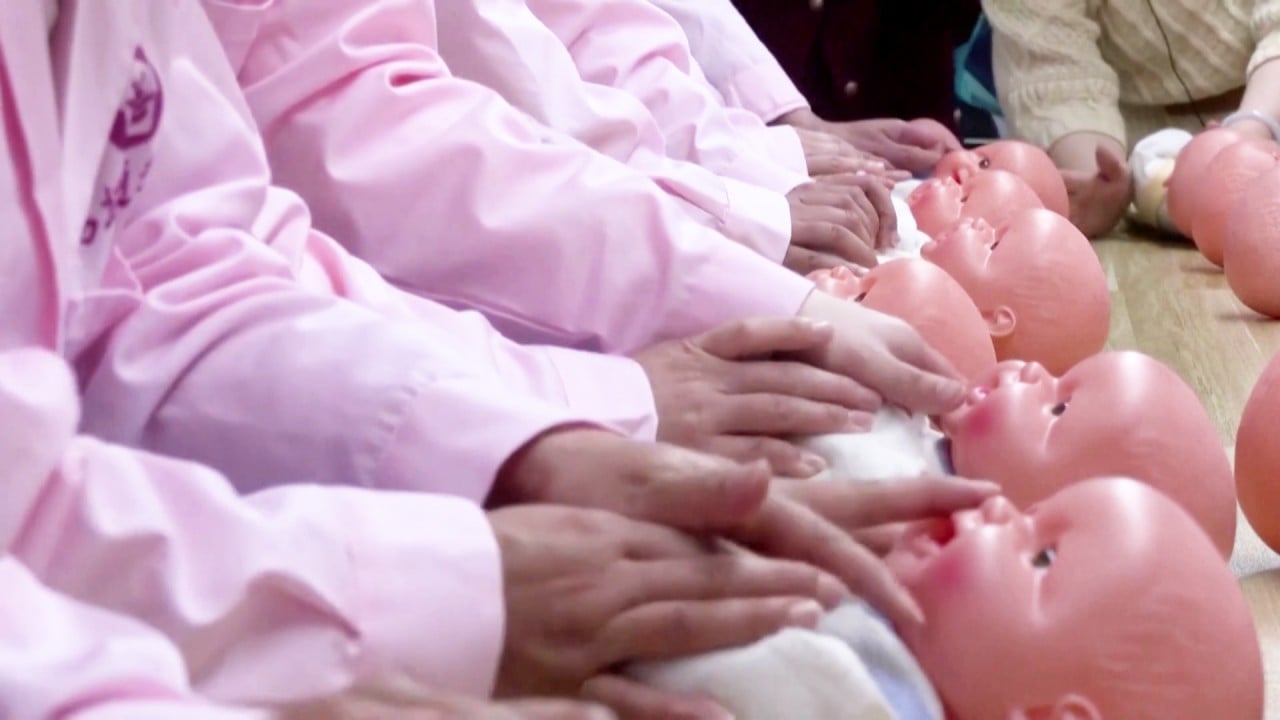The number of children enrolled in kindergarten also saw its first decline in nearly two decades in 2021, while the number of primary school students fell in 2022 for the first time in a decade, according to the Ministry of Education.
“With fewer students, there will inevitably be school layoffs during a certain period or a certain region,” said Zhou Zhaohui, a senior researcher at the Chinese National Academy of Educational Sciences.
But he said the extent of the impact depends largely on what authorities do in the coming years.
“According to my field research, local governments will definitely hire fewer teachers this year due to their financial burdens,” Zhou added.
The Education Department of central China's Hunan Province issued a directive in November urging better allocation of education resources over the next five to 10 years based on birth rate, urbanization and the number of school-age children.
Over the past year, a series of other local governments, such as in Shandong and Sichuan, have announced plans to stop offering key education-related degree programs at some universities and colleges to limit the supply of teachers.
Amid the huge popularity of such programs, driven by the “teaching craze” of the past two years, “many local governments have taken the initiative to cool the enthusiasm by adjusting specializations, which is particularly worthy of attention.” This was stated in a report issued by human resources research company MyCOS in January.
The number of compulsory education schools across the country has been declining since 2003, and this trend will continue from 2020 to 2035.
For decades, Chinese schools have been crowded with children, with as many as 50 students per class in some urban areas and about 30 in most rural areas.
If classes remain at the same levels, there will be a surplus of 1.5 million primary school teachers and 370,000 middle school teachers by 2035, according to research by a team led by Qiao Jinzhong, a professor of education at Beijing Normal University.
“The number of compulsory education schools across the country has been decreasing since 2003, and this trend will continue from 2020 to 2035, with the pace of decline gradually accelerating,” he told Chinese magazine Newsweek in February last year.
Besides efforts to consolidate schools to concentrate resources, the shrinking number of schools is also driven by downward pressure on student numbers.
As if the US lost New Mexico: 6 conclusions from 2023 Chinese population data
As if the US lost New Mexico: 6 conclusions from 2023 Chinese population data
In 2021, the number of children in kindergarten saw its first decline since 2003, followed by another decline of 3.7 percent in 2022.
In 2022, the total number of pupils in primary schools also fell for the first time since 2013, falling by 478,800 from the previous year to 107 million.
The trend may prompt public schools to reduce class sizes to avoid layoffs, which would also allow teachers to increase the time they spend with each student, said Maggie Chen, who has been a teacher in Zhejiang province for nearly two decades.
But things could be tougher in private schools, which are under greater financial pressure and already have small class sizes. “There will be a high probability of layoffs,” she said.
It is crucial to promote the upgrading of rural teachers through quantitative abolition as soon as possible
According to Huang Bin, a professor at the Institute of Education at Nanjing University, lower demand for teaching resources is not a bad thing, especially for remote schools where teachers are often poorly trained and lack development opportunities.
“Many teachers have relatively low skill levels, especially in rural schools,” he said. “It is crucial to promote the upgrading of rural teachers through quantitative abolition as soon as possible.”
Huang added that the lower number of children will also mean less competition for schools, which could relieve parents' anxiety and students' stress.
Something worth crying about? Kindergartens in China are raining for the first time in 15 years
Something worth crying about? Kindergartens in China are raining for the first time in 15 years
According to a poll conducted by online technology news platform Youth36kr in May, more than 72 percent of 535 parents surveyed expressed high levels of anxiety, rating it above five on a scale of 10.


